Five of Tina Turner's Most ICONIC Looks
Let's revisit a few of the Queen of Rock & Roll's Most Iconic Looks One Last Time
Tina Turner passed away earlier today in Switzerland at the age of 83. Dubbed the Queen of Rock n’ Roll,” over a 66-year career, Turner gave us hit songs, amazing performances, one of the best biopic films of all time…and lewks.
As a (sometimes) fashion girlie, I often conceptualize time periods, celebrities and cultural landmarks with the fashions that accompany them. With a nearly 70-year career, Tina Turner has a treasure trove of stage, TV, and film looks to choose from that all symbolize very specific time periods in her life. There’s young and impressionable Tina who married Ike in 1967; formerly Anna Mae Bullock, who endured horrendous spousal abuse. There’s post-divorce Tina left with nothing but her name and her dignity, trying to rebuild her career and her life. There’s rock n’ roll goddess Tina, flying high with hit albums, number-one singles and a turn as an actress in a big-budget blockbuster film. And there's legendary Diva Tina, retiring to Switzerland after entertaining us all for decades.
Here are just a few of the looks that punctuated each era in an iconic life.
Rolling Stone #2 Cover, November 1967
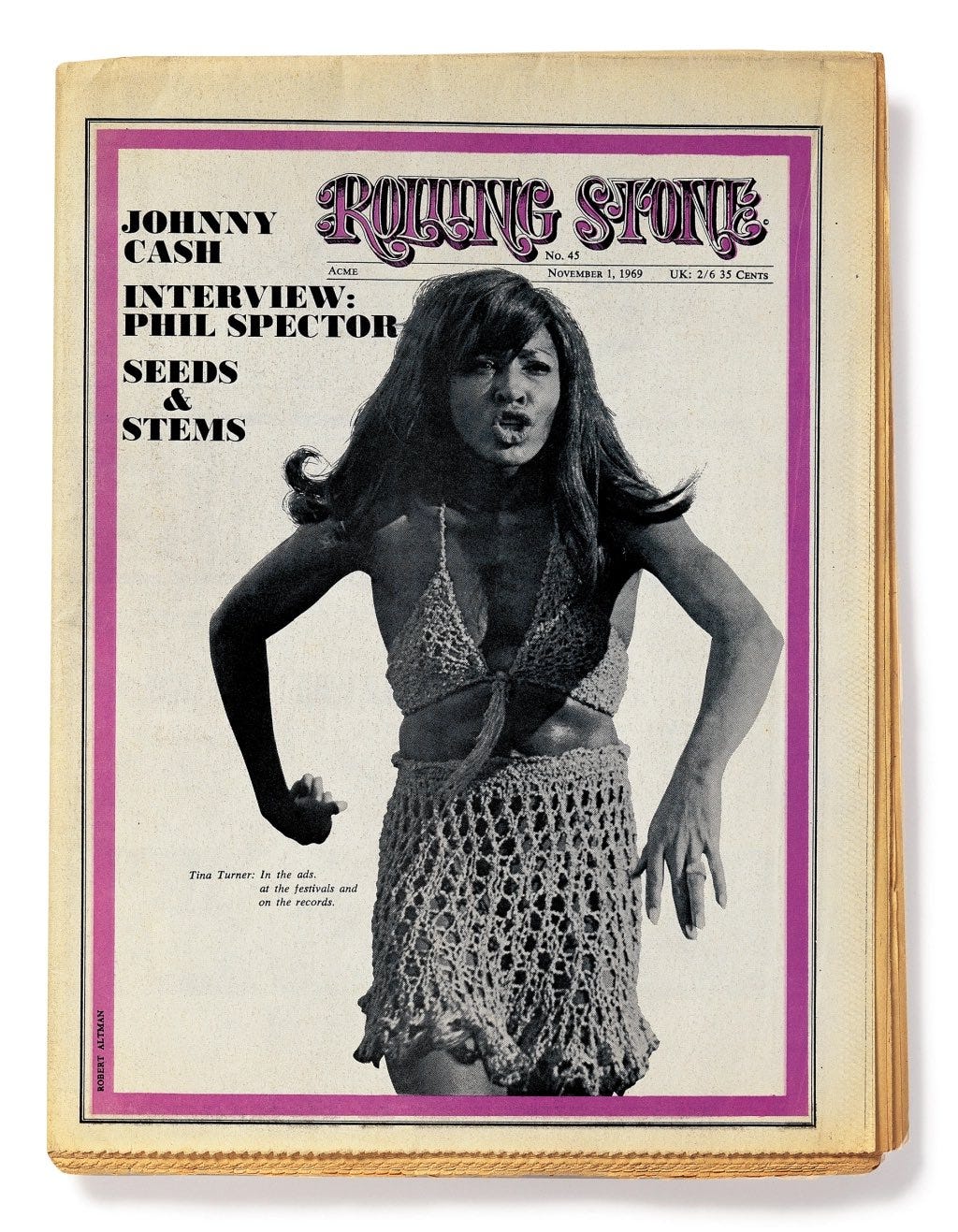
Tina Turner was on the cover of the second-ever issue of Rolling Stone Magazine. The crochet two-piece was indicative of many looks the Tennesse-born star wore during her early career. The flippy skirt ensured lots of movement for the lively thrashing and shaking Tina and The Ikettes, the backing trio for the Ike & Tina Turner Revue. Of their performance style, Rolling Stone wrote:
Tina Turner is an incredible chick. She comes in this very short miniskirt, way above her knees, with zillions of silver sequins and sparklers pasted on it. Her dancing is completely unrestrained. Unlike the polite hand-clapping Motown groups, she and the Ikettes scream, wail and do some fantastic boogaloo.
Turner graced the cover of the famous music magazine EIGHT times; in the 1960s, the 1970s, the 1980s, the 1990s and the 2000s. MOTHER.
The Wing Dress, 1977
After Tina divorced her abusive husband, Ike Turner, in 1977, she was left with virtually nothing. The duo was on tour in Dallas, Texas, in 1976 when Turner decided that she had had enough and filed divorce papers on July 27. Tina later detailed some of her abuse in her autobiographies; stating that he threw hot coffee in her face and broke her jaw. During the divorce proceedings, Tina was forced to live on food stamps with her children because Ike refused to relinquish any of their shared assets.
In the end, Tina famously only asked for one thing in her divorce: the use of her stage name. But her problems didn’t end there. Because she filed for divorce in the middle of a tour, she and Ike were on the hook for repaying promoters, venues and staff from the canceled contracts. Those parties sued, and Tina had to pay her share.
Now that I’ve set the stage, I hope you can see why this winged dress was so important to Tina. Designed by award-winning stage, film and TV costume designer Bob Mackie, Tina wore this and several other costumes when she played shows in the late 1970s in an effort to get her solo career going. The pleated silver lame wings would float behind Turner as she dashed across the stage with her signature high-energy moves.
In a 2020 NBC News interview, Turner said this about the costume:
After I left Ike, Bob Mackie made me a costume that had wings. I felt like I was flying, and I was — on my own and free for the very first time.
It wasn’t until after her divorce that the Proud Mary singer felt like she could experiment with fashion and find the designers and looks that she liked, without having to please or live for anyone else. Mackie’s wings costume is a perfect example of the freedom post-divorce Turner felt.
THE Flame Dress, 1977
Talk about Sisterhood of the traveling dress! Another Bob Mackie design, the flame dress was also worn by Cher, Wonderwoman’s Lynda Carter, RuPaul and Beyonce.

Only eight months after filing for divorce, Mackie and Turner worked together on the costumes for her appearance on CBS’ The Sonny & Cher Show, the famous primetime variety show helmed by then-married musical act Sonny Bono and Cher. The flame dress, made of multicolored sequins and orange turkey feathers, was originally designed for Cher, but since the pair were performing a medley together, Mackie designed an identical dress for Turner. When the newly solo singer needed a wardrobe for a tour later that year, she commissioned Mackie, and the flame dress made the cut.
Turner’s more operatic stage look was fairly short-lived. By the early 1980s, she switched from stage glamour to a look many of us know her for: rock n’ roll queen.
What’s Love Got to Do With It, 1984
Picture it: after filing for divorce from her abusive husband, being locked out of multiple contracts, performing on small stages around the country to pay the rent, and stuck with the bills from canceling the tour she was on when she filed for divorce. Tina Turner needed a hit album.
And she got one. Eventually.
Turner’s solo career stalled after leaving Ike; she had a hard time getting signed to a major record label, but Capitol Records took a chance on the 44-year-old singer, signing her to a contract. It paid off. Her first album under Capitol, 1984’s Private Dancer, was a smash hit. Upon its March 29th release, it peaked at number three on the Billboard 200 chart, spending ten consecutive weeks in the top ten and was certified 5x platinum. It also peaked at number two on the UK Albums chart and remained on the charts for 150 total weeks. In Canada and Germany, it was one of the best-selling albums of the 1980s. Turner also won four Grammy Awards for the album: Best Female Rock Performance, Best Female Pop Vocal Performance, Record of the Year, and Song of the Year.
All four Grammy’s were won for the Billboard Hot 100 #1 song: What’s Love Got to Do with It, a pop-rock ballad that remains one of Turner’s top-selling singles of all time. Her iconic look in the music video: a short black leather mini skirt, spikey platinum blonde mullet and fitted denim jacket became one of her signature looks. At 44 years old, it was daring, sexy and a reminder that Turner still had many, many years left as a sex symbol and rock n’ roll icon.

When the Grammy Award winner embarked on her Private Dancer tour, her costumes mimicked the same look: lots of leather, denim, black stockings and big, tall hair. The look is so iconic, in fact, that just last year, Mattel released a Barbie based on the look:
Tina Gets Post-Apocalyptic, 1985
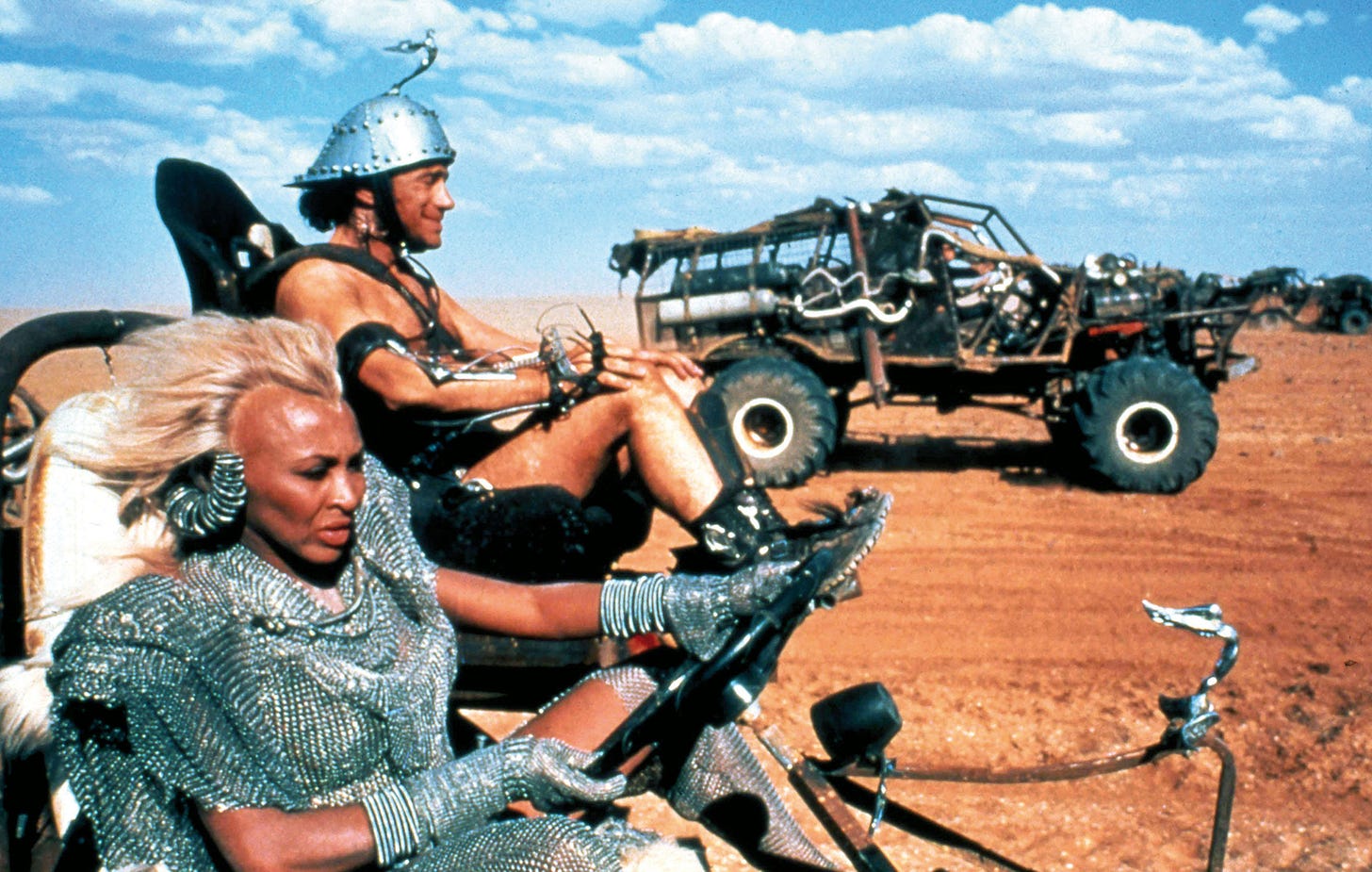
I’m almost ashamed to admit that Turner’s, well, turn, as the ruthless yet glamorous Aunt Entity in Warner Brother’s 1985 big-budget Mad Max: Beyond the Thunderdome is my favorite Tina Turner look. ALMOST. But no, I love this look. I think I just like the idea of a future that may be slim on natural resources, but still allows a little David Bowie-esque high glam. That’s probably it.
The singer was still at the top of the world following her hit album Private Dancer, and the two songs she sang for the film’s soundtrack, We Don't Need Another Hero (Thunderdome), and One of the Living, were well-received. We Don’t Need Another Hero was a huge international hit: it reached No. 2 on the US Billboard Hot 100, No. 3 in the UK and No. 1 in Australia, Canada, Germany, Spain and Switzerland. It earned songwriters Terry Britten and Graham Lyle Golden Globe and Grammy nominations and won them an Ivor Novello Songwriting Award in 1985.
The chainmail costume was designed by Australian Norma Moriceau, who used to chum it up with Vivienne Westwood and her then-partner Malcolm McLaren in 1970s London. The costume is really a thing of beauty. It is completely chainmail mesh, with a silver bikini that peaks through at the bottom, and built-in shoulder pads that are right on trend with the 1980s but are so dramatic that they feel futuristic and dystopian. Moriceau even went as far as consulting Australian company Glomesh on the construction of the dress. If you aren’t aware, Glomesh is known for its mesh evening bags, made famous by clubgoers in the 1960s and 1970s.
On top of all that, Tina was 46 when she wore the revealing costume, but mother looked AMAZING.
As the tyrannical ruler of Bartertown in the film, Tina was a great villain, and the costume and hair and makeup did what needed to be done.
Whew…that was a whirlwind summary of a career that spanned decades, genres, continents and even citizenship. If there’s one thing I have always loved about Tina Turner, it’s that her first act, hell, even her second act, didn’t take her out. She was a dynamite singer and consummate performer who will be missed.





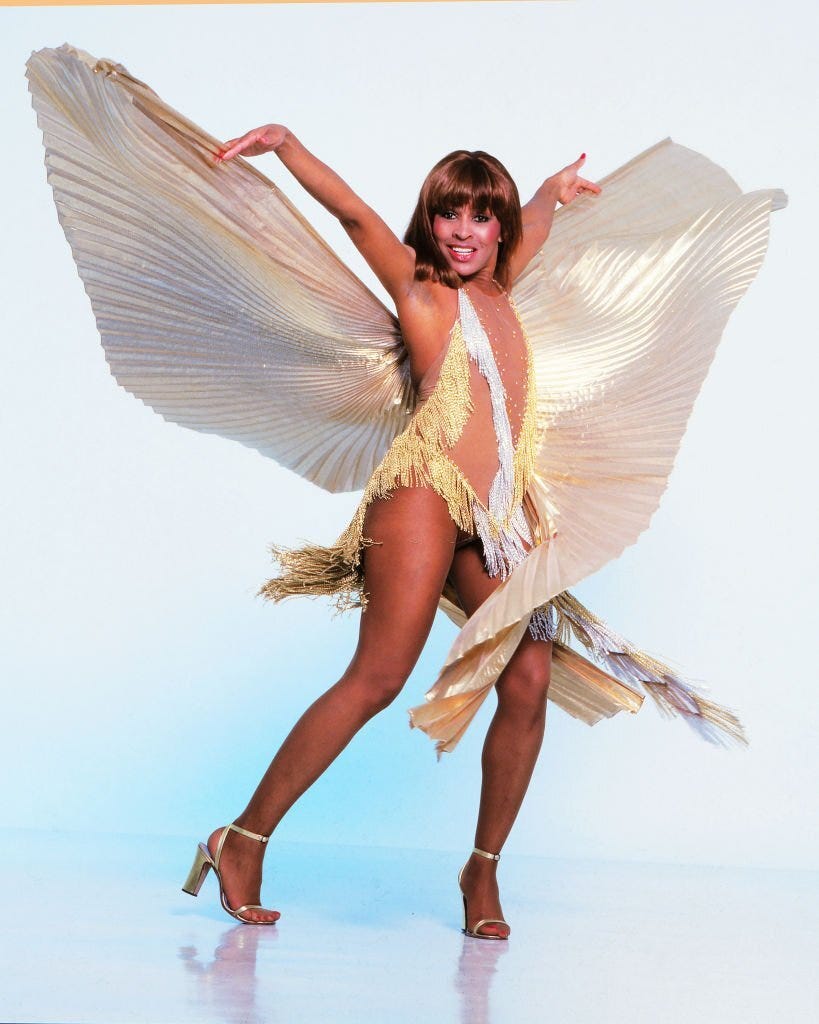
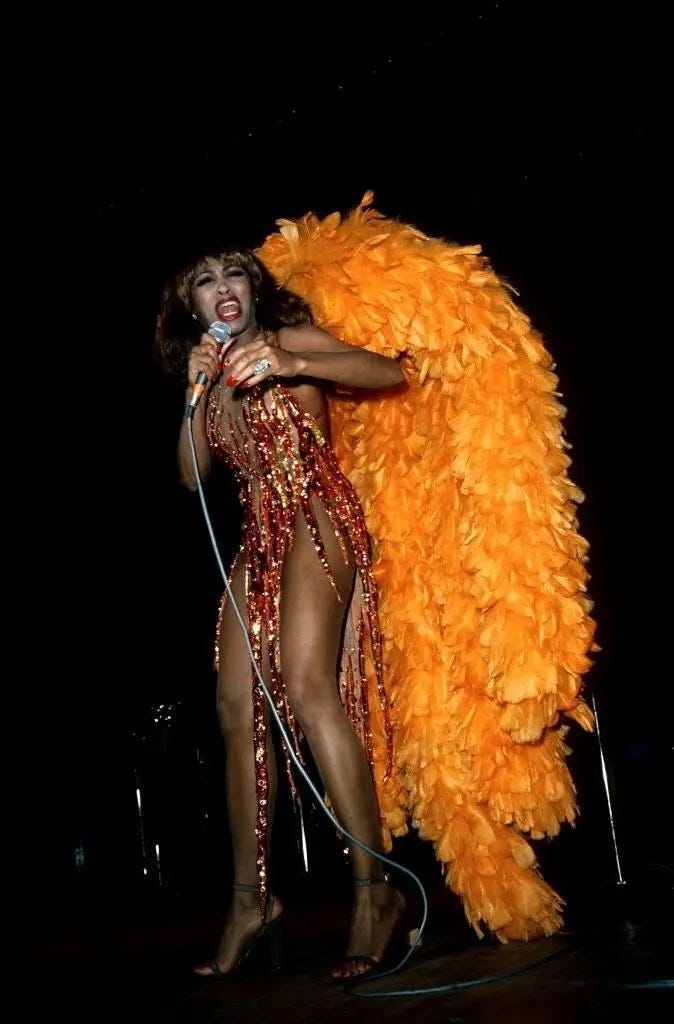
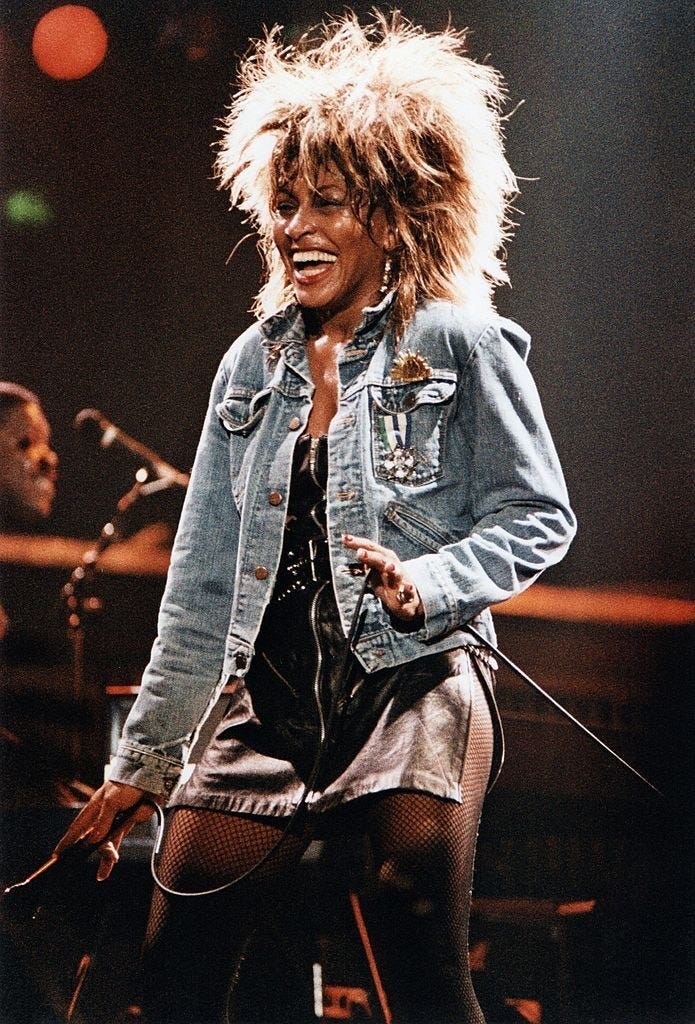
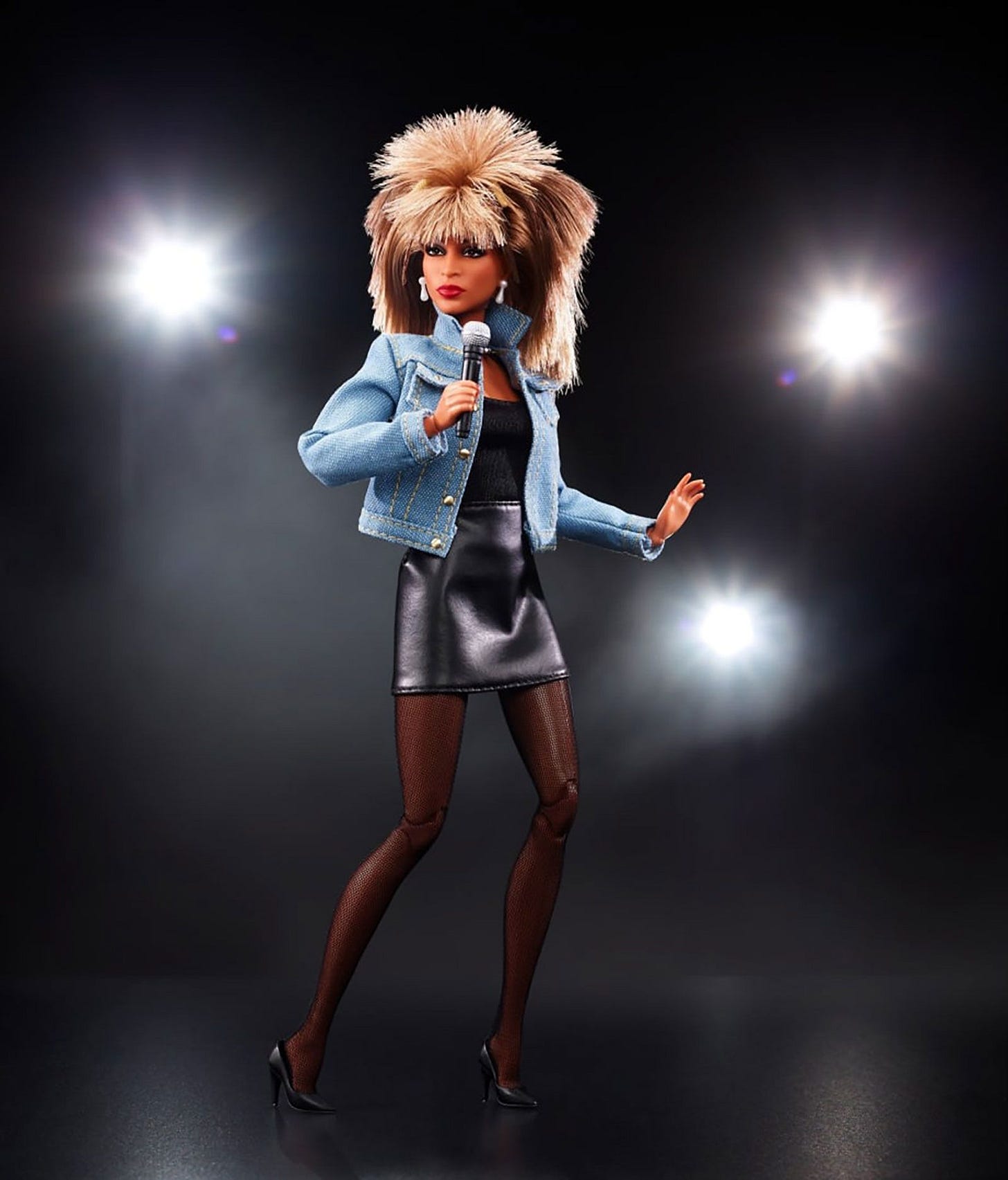
Love this, what a great tribute!